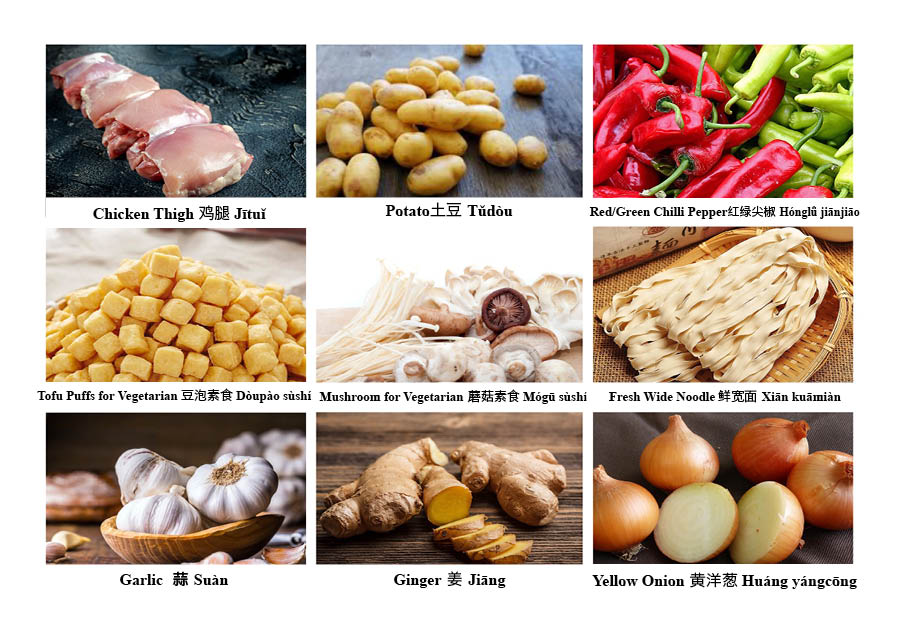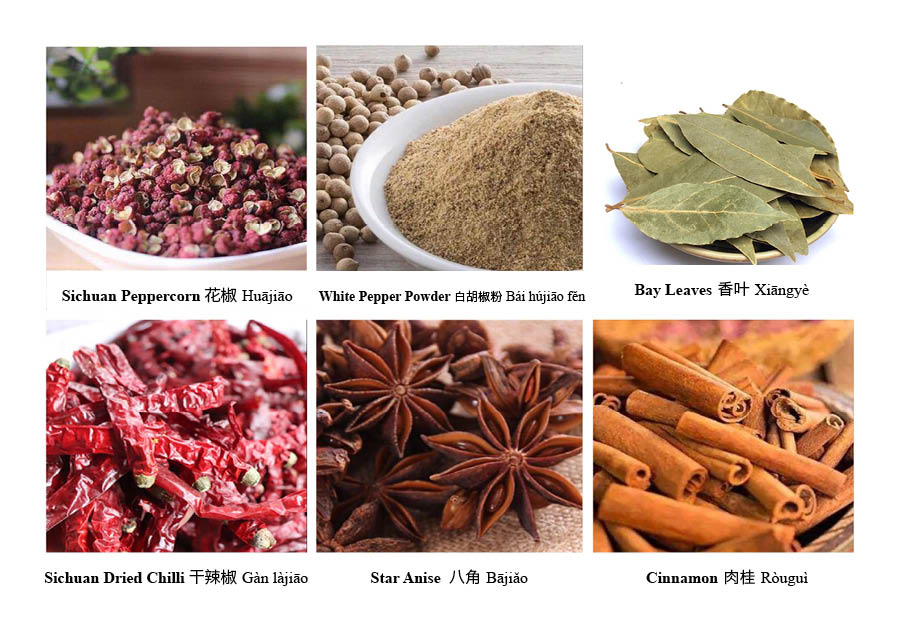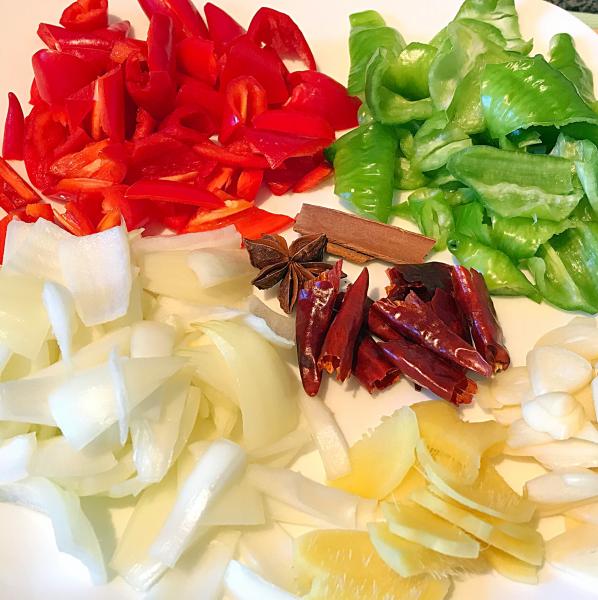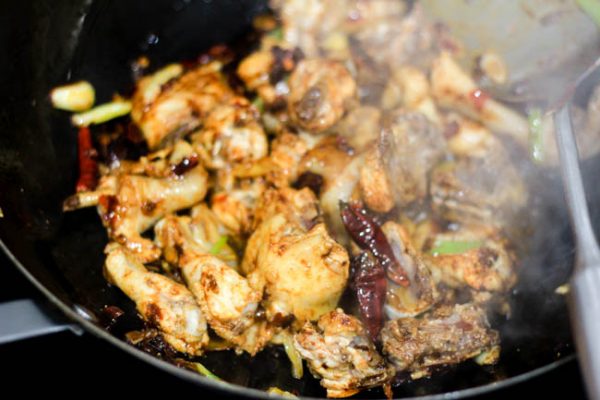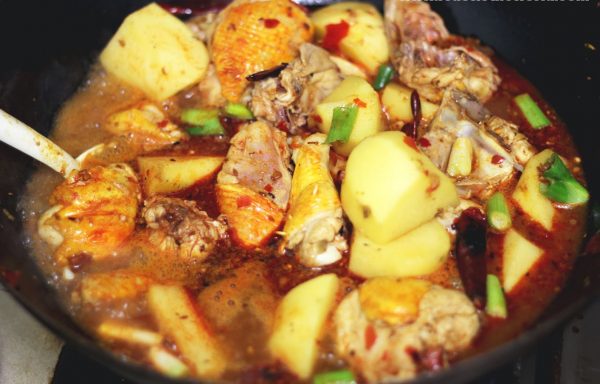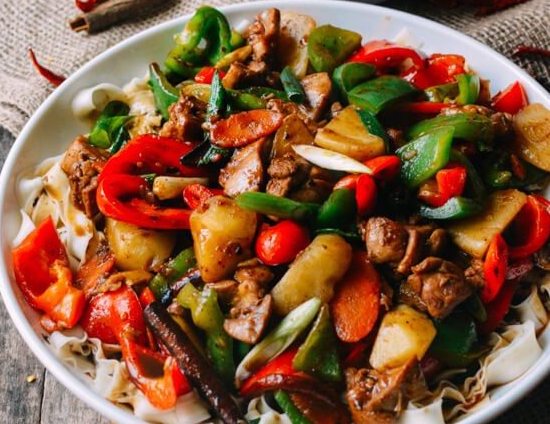Make this at home: Xinjiang big plate chicken
"Big plate chicken" is a fragrant chicken stew originally from China's northwest province of Xinjiang, but now famous across the country.
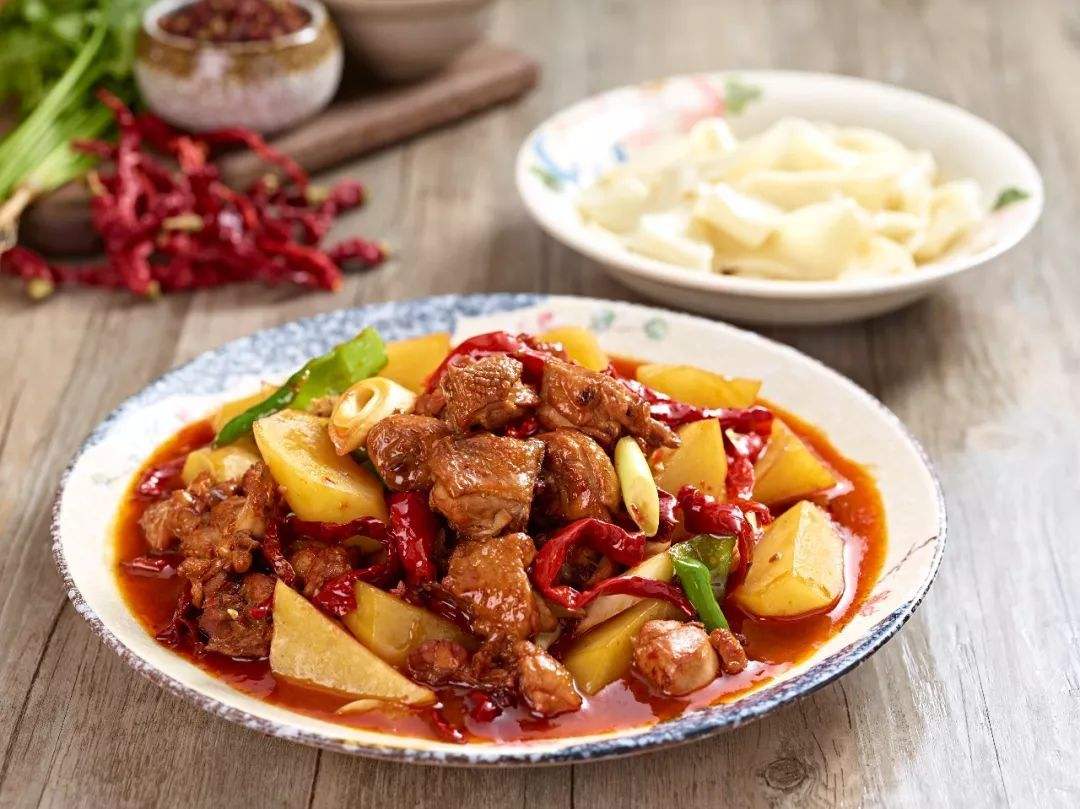
This weekly food column is done in collaboration with the Beijing-based project and event company The Hutong, which is currently running a cook-at-home competition called Quarantine Cook-Off.

Xinjiang Big Plate Chicken 新疆大盘鸡 Xīnjiāng dàpán jī
Big plate chicken is a type of chicken stew that is generally said to have been created by a migrant from Sichuan, living in Shawan County in northern Xinjiang, who mixed hot chili peppers with chicken and potatoes in an attempt to reproduce a Sichuan taste. (Other people and places also claim origin: Some say it was invented by a Hunan native at Chaiwopu Lake near Ürümqi.)
Some believe the dish was originally served in a number of smaller plates, but later a large single plate was used, giving it its name. The dish was served by restaurateurs along the Xinjiang highways as a quick fix for truck drivers who often arrived at an odd time of day. Its rich flavor and heartiness quickly made the dish a favorite of the region, and the dish then spread to the rest of China.
An entire chicken is cut into bite-sized pieces (usually unboned), sautéed with spices, and mixed with coarsely chopped vegetables and simmered in broth, providing a savory and spicy casserole-like dish. It is usually served with lātiáozi 拉条子 (hand-stretched noodles, or laghman) and shared by family and friends in a communal manner. If hand-pulled noodles aren’t available, you can use any fresh or dried pasta.
Other variations of the dish may be served with nan (馕包大盘鸡 náng bāo dàpán jī), a staple bread widely consumed in Xinjiang, usually served baked or roasted in Xinjiang restaurants. With the sauce, the bread becomes very soft and moist, producing a melt-in-the-mouth texture. If the noodle and the bread is a challenge for you to get, the dish is still great with rice.
The main ingredients are chicken, bell/chili peppers, and potatoes, cooked with onions, garlic, ginger, dried chili peppers, ground white pepper, star anise, Sichuan peppers, chili bean paste cooking oil; also, soy sauce and, optionally, beer or cooking wine.
For this recipe, we’ve chosen the chicken thigh instead of the whole chicken.
Ingredients:
(Serves 4)
- 2 big chicken thighs (or 1 whole chicken, about 700g). Chicken can be substituted with assorted mushrooms and/or tofu
- 3 medium-size potatoes
- 1 medium-size green chili pepper
- 1 medium-size red chili pepper
- 1 small yellow onion
- 10g ginger
- 5-8 cloves of garlic
- 2 tbsp of Sichuan chili bean paste (can be substituted with tomato paste or fresh tomatoes)
- 1tsp of salt
- 1tsp of sugar
- 1 tbsp of cooking wine
- 2tpsp of light soy sauce
- 1tbsp of dark soy sauce
- 2-3 tbsp of vegetable oil
- 250g fresh wide noodles
- 1L chicken/vegetable stock/water, or enough to cover all the ingredients.
Spices:
- 10 pieces of dried chili pepper
- 1 tbsp of Sichuan peppercorn
- 1 cinnamon bark
- 2 pieces of star anise
- 2 pieces of bay leaves
- A small pinch of white pepper powder
Instructions:
Wash the chicken and cut into bite-sized pieces. Cut the potatoes and chili pepper into small pieces, also about bite-size. Slice the ginger and onion, crush the garlic.
Heat 2-3 tbsp of oil in a wok on low heat and add sugar.
When the sugar is about melted, add the chicken and stir fry until the chicken meat is tight and dried.
Add the Sichuan peppercorn, dried chili, star aniseed, cinnamon, bay leaves, garlic, ginger, onion and fry until fragrant.
Add Sichuan chili bean paste, light soy, dark soy, cooking wine, and mix well.
Add water/stock to boil and cover it and simmer for about 3 minutes.
Mix in the potatoes (make sure all the potato and chicken are well mixed in the water/stock); stir a bit while the liquid simmers.
Get a fork to check the potato; if it cuts through easily, they are cooked. Add the bell pepper and fry for another 3 minutes, until the liquid thickens.
Give it a taste and adjust the flavor for saltiness.
Serve with noodles, rice, or bread.
Follow The Hutong on WeChat:

